The Lonely Ballad of the Dulles Airport Mobile Lounge
A high-tech room on wheels and the airport that might have been.
If your travels ever bring you to Concourse D of Washington, D.C.’s Dulles International Airport, you may find yourself trundling your baggage toward a shabby room at the end of a hallway. In the room are seats, arranged in a circle around the walls, as if in the lobby of a doctor’s office. At the door you may pause. It’s hard to tell what this room requires of you. There are not enough seats for it to be the waiting area for a bus but here and there are shiny, floor-to-ceiling metal poles, suggesting transport. An irate voice gets on a loudspeaker and says, “Move to the back of the lounge, folks. Make room for the other passengers.”
And then the whole thing starts moving.
The mobile lounges of Dulles Airport are huge vehicles, each weighing 76 tons with a maximum cruising speed of 26 miles per hour, and can carry to the terminal building up to 90 bewildered, freshly de-planed people. They were designed more than 60 years ago by Finnish architect Eero Saarinen. Their purpose? To radically restructure the idea of airports. And for a brief period, it seemed like they might.
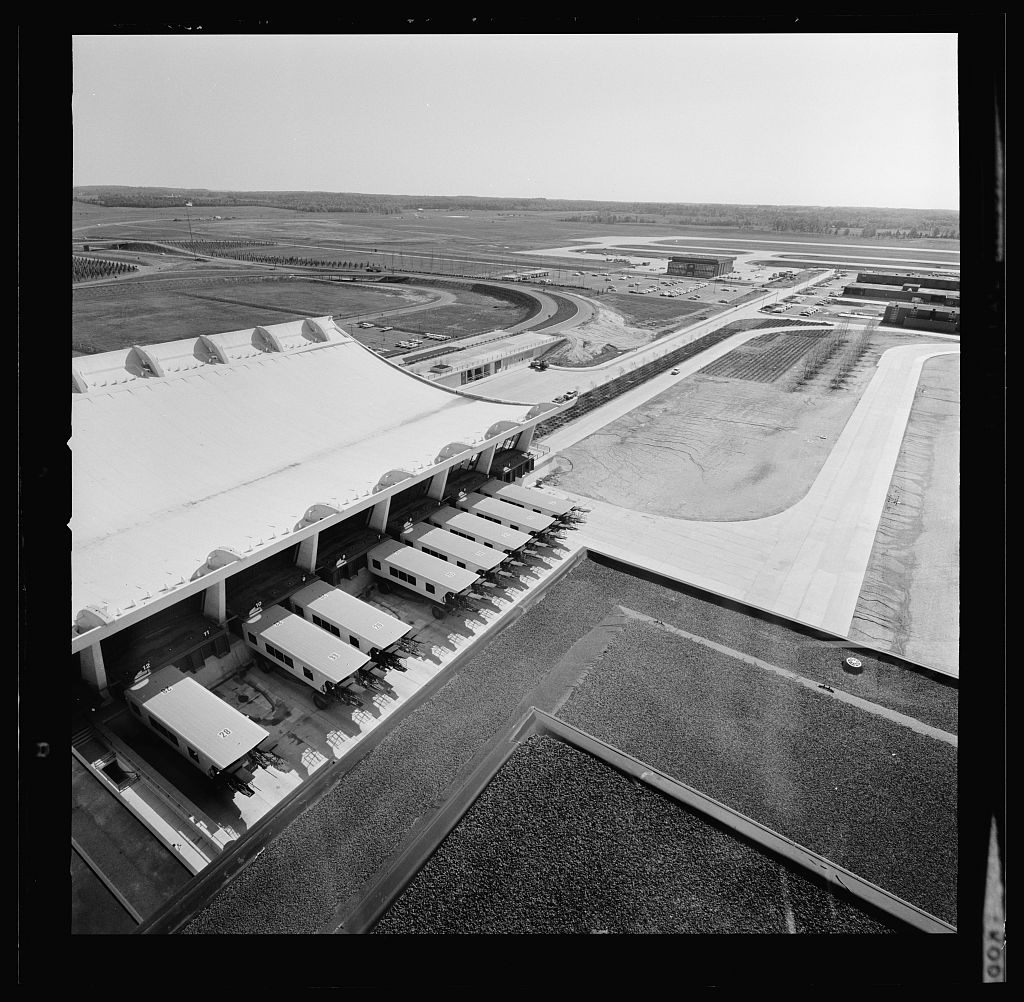
An aerial view of the mobile lounges lined up at Dulles. (Photo: Library of Congress/LC-DIG-krb-00768)
The logic behind the mobile lounge was this: By the early 1960s, airports had transformed from simple buildings on the edge of a field to ramifying systems of hallways. As planes grew larger, they needed more space as they lined up next to each other along the airport building. As flying grew more popular—though still very much a luxury—airports needed to have more and more gates. The result was that terminal buildings sprouted long protrusions called fingers. Hundreds of feet long, they accommodated jets very comfortably.
For passengers, though, the finger-style airport was a purgatory of walking. In a 1958 promotional film for mobile lounges made by designers Ray and Charles Eames, the footsteps of tired travelers plod over the narration. While it used to be that you could walk straight from the entrance onto your plane, now you were reduced to wandering through a structure built for giants. “Walks, which were once filled with romantic anticipation of adventure, will be come more and more irritating as the high-speed flights come into service,” the film warns.
So the Saarinen-designed Dulles Airport, when it opened in 1962, did not have fingers. Instead, after passengers checked in on one side of the terminal building, they crossed to a row of doors that opened onto a fleet of mobile lounges. While the aircraft, some one or two miles off on the tarmac, were prepared, flyers relaxed in these swank waiting areas, enjoying cocktails from nearby stands. “The short wait is made even more pleasant,” wrote FAA Aviation News in 1965, “by another innovation—piped-in music.”
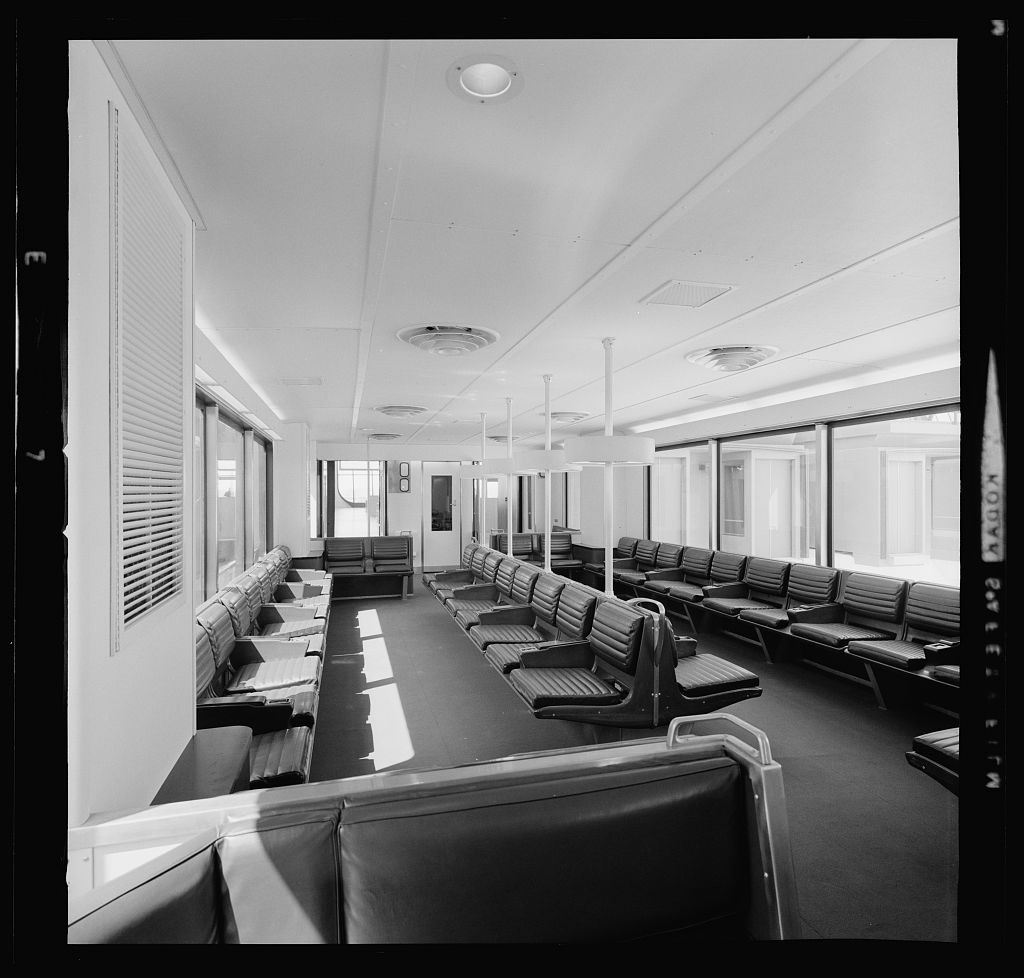
Inside the mobile lounge. (Photo: Library of Congress/LC-DIG-krb-00775)
Fifteen minutes before departure, the mobile lounge closed its doors, pulled away from the terminal, and rolled off like a very large dune buggy. Once in reach of the plane, its far end mated with the plane door, and passengers processed onto their flight. The empty lounge headed back to the terminal, to become a waiting room again. The same thing could happen in reverse to bring passengers from planes to the terminal. It could cut the walking distance down to 150 feet from the building entrance to the plane door, and vice versa.
The idea had legs—that is to say, wheels. The monumental Mirabel International Airport in Montreal was designed around mobile lounges. In aviation forums, people recall mobile lounge rides in airports from St. Louis to Jeddah. A version of the Plane Mate, a mobile lounge that could ratchet up and down to meet doors of different heights, shuttled many NASA astronauts from point A to point B. It might have seemed that what the Eames film prophesied, while panning over a field of rocket ships, would come true: “There is a high probability that something like the mobile lounge will be servicing quite a few of the conveyances that are yet to come along.”
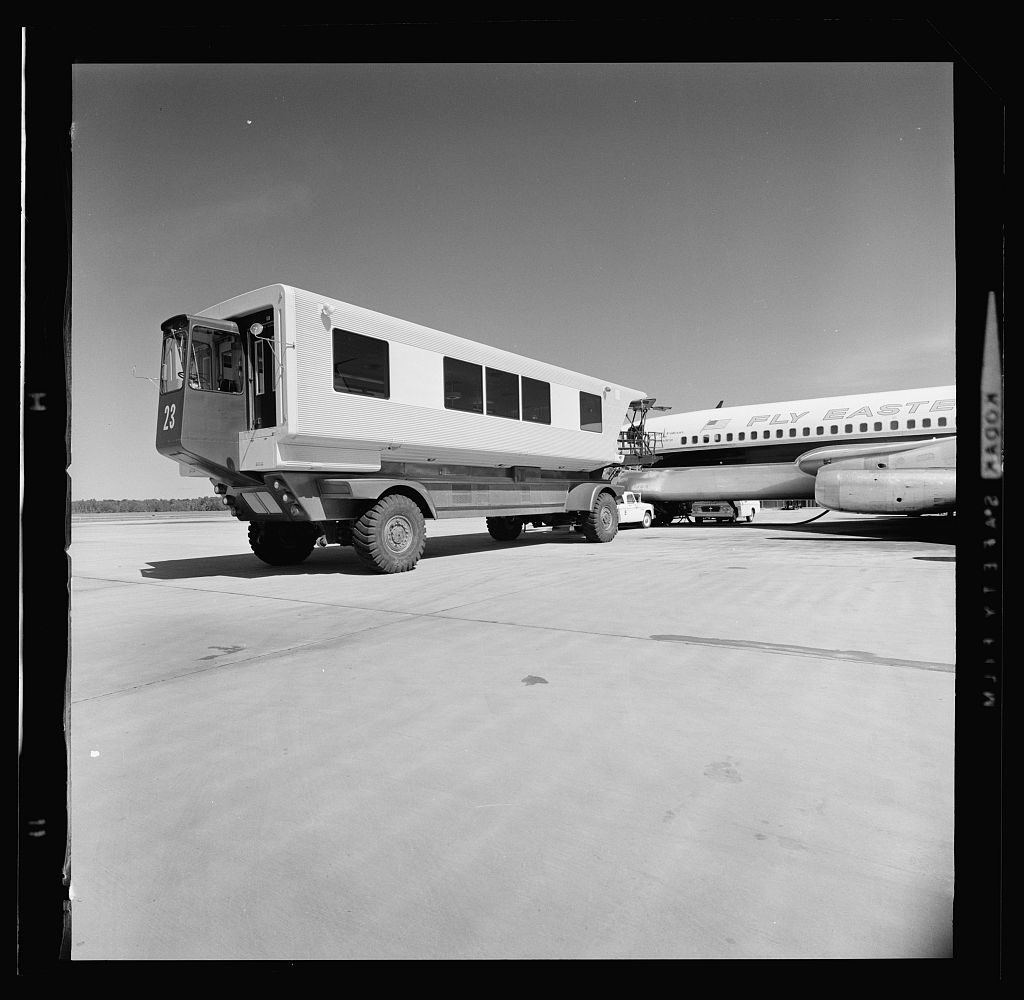
A mobile lounge and plane at Dulles, c. 1960. (Photo: Library of Congress/LC-DIG-krb-00771)
But you may have noticed that mobile lounges are not waiting for you at the door of every aircraft. The problems that sparked the mobile lounge certainly have not gone away—in 1958, Dallas Airport had 26 gates; today it has 165. Airports are still spread out. But the solutions now are automatic air trains, which have the benefit of fitting neatly underground, moving walkways, or buses.
The lounges of Dulles, along with Plane Mates, are now relegated to shuttling passengers to and from the D Concourse, which is not yet on the train system. Why did mobile lounges cede the limelight to trains and buses—especially when they could be seen as a kind of glorified bus themselves—so completely?
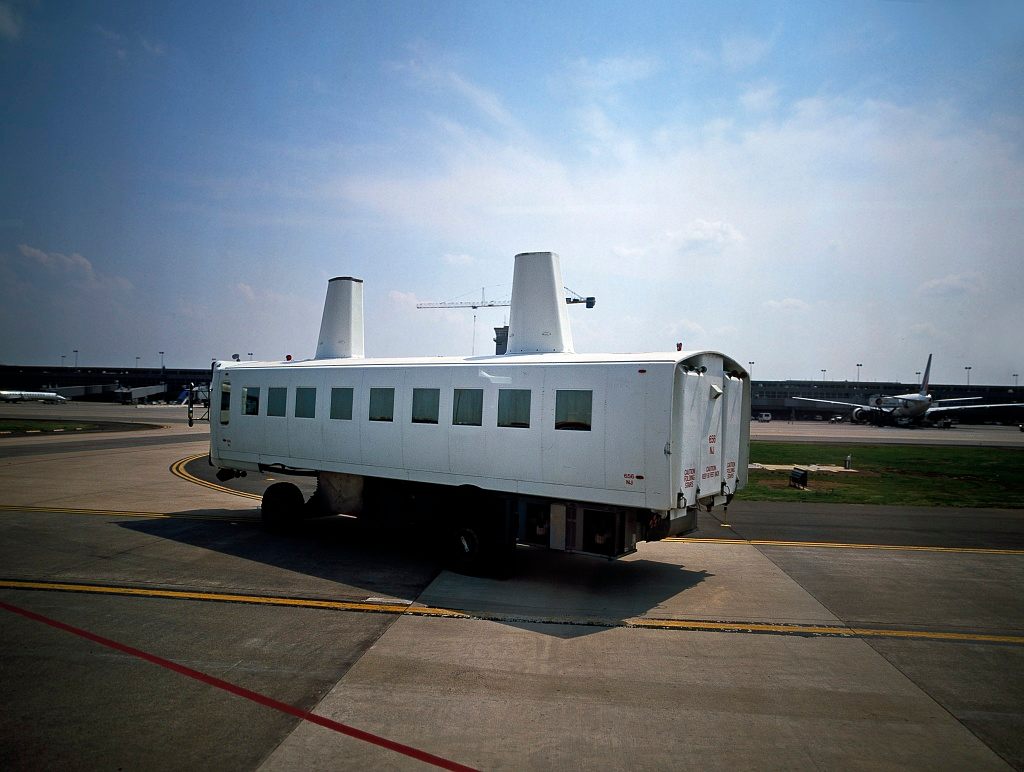
A mobile lounge on the tarmac, photographed in 1980. (Photo: Library of Congress/LC-DIG-highsm-15839)
The answer is not clear. “You ask a question which always bothered us, and to some extent still does,” says Jim Wilding, the former president of the Metropolitan Washington Airport Authority.
“Part of the answer is that automated train systems offer a more cost-effective way of moving passengers, especially in the area of labor cost,” he says. But there is another, less quantifiable notion. Passengers arriving off a long-haul flight seem to see a ride on the mobile lounge, once described as a paragon of luxury, as a burden. It is a transformation that has overtaken nearly every part of the air travel experience, which used to be an excuse to put yourself in the hands of a friendly ticket agent or flight attendant. Now, travelers prize what little autonomy they have—choosing to stand, say, on the moving walkway.
“Said more simply, they tend to resent being captured for an additional period of time,” says Wilding, “when all they want is to be let free to be on their way.”





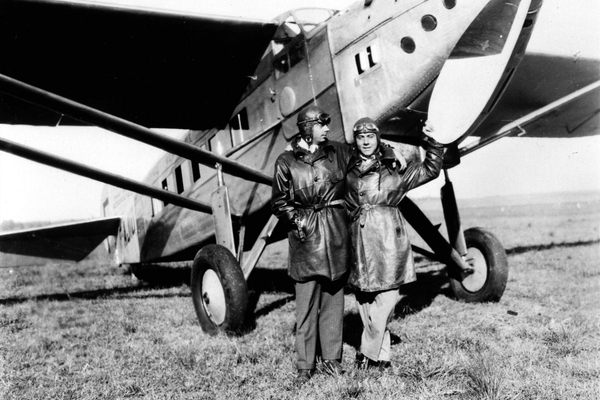















Follow us on Twitter to get the latest on the world's hidden wonders.
Like us on Facebook to get the latest on the world's hidden wonders.
Follow us on Twitter Like us on Facebook